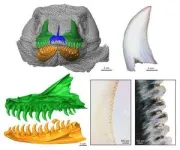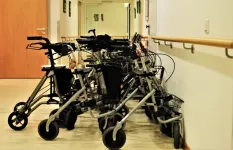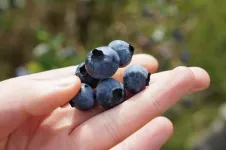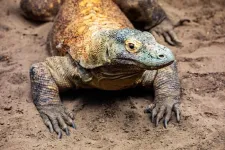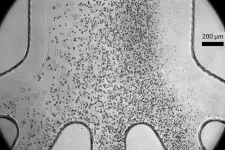(Press-News.org) Almost 1 in 5 Indian adults aged 60+ show signs of mild neurocognitive disorder, according to nationally representative data - more than previously recognized
###
Article URL: https://journals.plos.org/plosone/article?id=10.1371/journal.pone.0297220
Article Title: Prevalence of DSM-5 mild and major neurocognitive disorder in India: Results from the LASI-DAD
Author Countries: USA, UK, India
Funding: This work was supported by the National Institute on Aging (R01 AG051125 (JL), R01 AG030153 (JL), U01 AG064948 (JL), R01 AG070953 (ALG)). The funders had no role in study design, data collection and analysis, decision to publish, or preparation of the manuscript.
END
Almost 1 in 5 Indian adults aged 60+ show signs of mild neurocognitive disorder, according to nationally representative data - more than previously recognized
2024-02-07
ELSE PRESS RELEASES FROM THIS DATE:
More biodiverse nature landscapes may better buffer against stress - but only if you notice the difference, per experiment using videos of urban woodland
2024-02-07
More biodiverse nature landscapes may better buffer against stress - but only if you notice the difference, per experiment using videos of urban woodland
###
Article URL: https://journals.plos.org/plosone/article?id=10.1371/journal.pone.0297179
Article Title: Does increasing biodiversity in an urban woodland setting promote positive emotional responses in humans? A stress recovery experiment using 360-degree videos of an urban woodland
Author Countries: UK
Funding: SF received a PhD Studentship funding from the UKRI Economic and Social Research Council, ...
UK austerity politics correlated with increased frailty in the oldest adults
2024-02-07
The period of austerity politics from 2012 to 2018 was associated with steeper increases in frailty with age compared to pre-austerity between 2002 and 2010, according to a new study published February 7th in the open-access journal PLOS ONE by Carys Pugh of the University of Edinburgh, UK, and colleagues.
Previous research has linked a stalling in life expectancy growth to austerity politics implemented in response to the 2008-2009 financial crisis. However, the mechanism through which public spending cuts are associated with decreased life expectancy ...
Psychology study unearths ways to bolster global climate awareness and climate action
2024-02-07
An international team of scientists has created a tool that can aid in increasing climate awareness and climate action globally by highlighting messaging themes shown to be effective through experimental research.
The web-based tool, and the methods undergirding its creation, appears in the journal Science Advances.
The tool stems from a study involving nearly 250 researchers that drew more than 59,000 participants from 63 countries, including Algeria, China, Denmark, Germany, Israel, Japan, New Zealand, Peru, and the United States.
“We ...
Scientists reveal why blueberries are blue
2024-02-07
Tiny external structures in the wax coating of blueberries give them their blue colour, researchers at the University of Bristol can reveal.
This applies to lots of fruits that are the same colour including damsons, sloes and juniper berries.
In the study, published today in Science Advances, researchers show why blueberries are blue despite the dark red colour of the pigments in the fruit skin. Their blue colour is instead provided by a layer of wax that surrounds the fruit which is made up of miniature structures that scatter blue and UV light. This gives blueberries their blue appearance to humans and blue-UV to birds. The chromatic blue-UV reflectance ...
McMaster and ALK researchers discover new cell that remembers allergies
2024-02-07
Researchers with McMaster University and Denmark-based pharmaceutical company ALK-Abello A/S have made a groundbreaking discovery: a new cell that remembers allergies.
The discovery gives scientists and researchers a new target in treating allergies and could lead to new therapeutics. The research, published in Science Translational Medicine on Feb. 7, 2024, coins the brand-new cell as a type-2 memory B cell (MBC2).
“We’ve discovered a type of memory B cell that had unique characteristics and a unique gene ...
England’s oldest became frailer during austerity, study suggests
2024-02-07
The speed at which England’s oldest adults became frailer accelerated during the UK Government’s era of austerity politics, according to a new study.
Researchers say that the rate of frailty in people aged 85 and over in England increased 50 per cent faster per year between 2012 and 2018 compared with the preceding eight years.
The impact of frailty – a decline in a person’s mental and physical resilience to illness and injury – on the oldest in society must be considered should any new austerity measures be introduced, experts warn.
The study, led by researchers from the University of Edinburgh’s ...
Exceptionally rapid tooth development and ontogenetic changes in the feeding apparatus of the Komodo dragon
2024-02-07
Tea Maho and Robert R. Reisz
University of Toronto Mississauga
Kilat, the largest living lizard at the Toronto Metro Zoo, like other members of his species (Varanus komodoensis), truly deserves to be called the Komodo Dragon! Its impressive size and the way it looks at you and tracks your every move makes you realize that it is an apex predator, not unlike a ferocious theropod dinosaur. So, it is not surprising when you look around at his enclosure to find that there are shed teeth sparkling on the ground, a common find when ...
Scientists develop a low-cost device to make cell therapy safer
2024-02-07
CAMBRIDGE, MA – A tiny device built by scientists at MIT and the Singapore-MIT Alliance for Research and Technology could be used to improve the safety and effectiveness of cell therapy treatments for patients suffering from spinal cord injuries.
In cell therapy, clinicians create what are known as induced pluripotent stem cells by reprogramming some skin or blood cells taken from a patient. To treat a spinal cord injury, they would coax these pluripotent stem cells to become progenitor cells, which are destined to differentiate into spinal cord cells. These progenitors are then transplanted back into ...
Getting to know the ‘ghost’ inside batteries
2024-02-07
An Argonne team developing materials for solid-state batteries took an unexpected detour to investigate tiny short-circuits known as soft-shorts. Their insights will benefit battery researchers around the world.
Researchers at the U.S. Department of Energy’s (DOE) Argonne National Laboratory have shed important new light on what the early signs of battery failure look like. Their study — which relates to a condition called soft-shorts — provides the research community with valuable knowledge and methods to design better electric vehicle (EV) batteries.
The Argonne team’s research focused on all-solid batteries with anodes (negative electrodes) ...
Predicting neurodevelopmental disease in children from parent’s traits
2024-02-07
UNIVERSITY PARK, Pa. — Predicting the trajectory of neurodevelopmental and psychiatric disorders like autism or schizophrenia is difficult because they can be influenced by many different genetic and environmental factors. A new study, led by Penn State researchers, demonstrates that evaluating parents for their manifestation of traits of these disorders — and related diseases like depression and anxiety — may provide a more accurate method of predicting the prevalence, and potentially severity, of the disorders in affected children than screening for genetic variants alone. This is likely due, at least in part, to genetic variants the parents transmit to the ...

